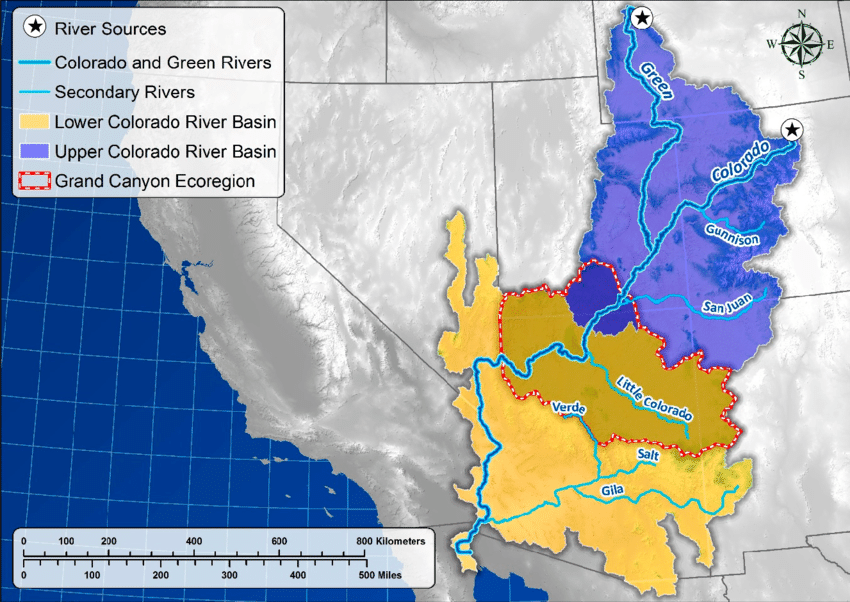More than 10 trillion gallons of water has evaporated from the Colorado River Basin between 2000 to 2021, according to a new study.
That’s about the size of Lake Mead in Nevada, which is fed, coincidentally, by the Colorado River System.
UCLA researchers are blaming the disappearance on the climate crisis that has been exacerbated by humankind in the last 200 years. The decline of the Colorado River, which runs through Wyoming, is used by over 40 million people for drinking water and irrigation for agriculture, is because of an increase in temperatures in the West. That increase, along with human need and consumption for more water, has drained the Colorado River by 10%, according to the study which was published in the journal American Geophysical Union’s Water Resources Research.
Governors and other leaders that rely on the Colorado River System have been scrambling for solutions to fix or at least mediate the problem. They suggestions range from cutting water usage to more drastic measure as water levels continue to spiral to record lows.
Lake Mead, fed by the Colorado River, has been of alarming concern as water levels dropped an unfathomable 20 feet over the course of four months last summer. The lake, which feeds the Hoover Dam, on average, generates about four billion kilowatt-hours of hydroelectric power each year for use in Nevada, Arizona, and California, which is enough to serve 1.3 million people.
Mead fell to its lowest level to-date in July 2022, with lake elevation of 1040 feet. If it falls an additional 145 feet, the reservoir hits what is called a “dead pool.” That is the point at which it’s unable to provide water or hydroelectric power to millions of customers because the water level isn’t high enough to turn the turbines which generate electricity.
It All Starts In The Mountains
The increased evaporation from rising temperatures is especially problematic in snowier states like Colorado, where the river’s headwaters begin.
“It’s increasing more across the snow-packed region as compared to regions without snowpack,” Bass said, noting that reductions of water are happening “twice as fast” in snowier regions. That’s in part due to a positive albedo effect – what happens when more snow melts with higher temperatures, exposing darker ground that absorbs still more heat.
Benjamin Bass, a water resources engineer and the study’s lead author, tells CNN that he and a team of researchers at UCLA conducted the experiment by modeling stream flow in the Colorado River basin under two basic premises: one with historical temperature conditions and one where they removed the impacts of anthropogenic warming caused by climate change. Researchers found that climate change-driven temperatures have had a dramatic impact, reducing flows over time.
Even though last winter dumped above-average snowpack and water into the basin, Bass relays that the 10% reduction in flow from 2000 to 2021 has remained consistent, even during wetter years.
“That’s occurring for wet or dry years,” Bass says. “Even though there’s been a wet winter, there’s still going to be that 10% reduction in runoff.”
“Unless greenhouse gases are curbed, those [water] reductions are going to continue to track with temperature increases,” Bass says.










